[2 Years Since the Tonga Eruption] The People of Tonga Overcome the Double Blow of a Tsunami and COVID-19
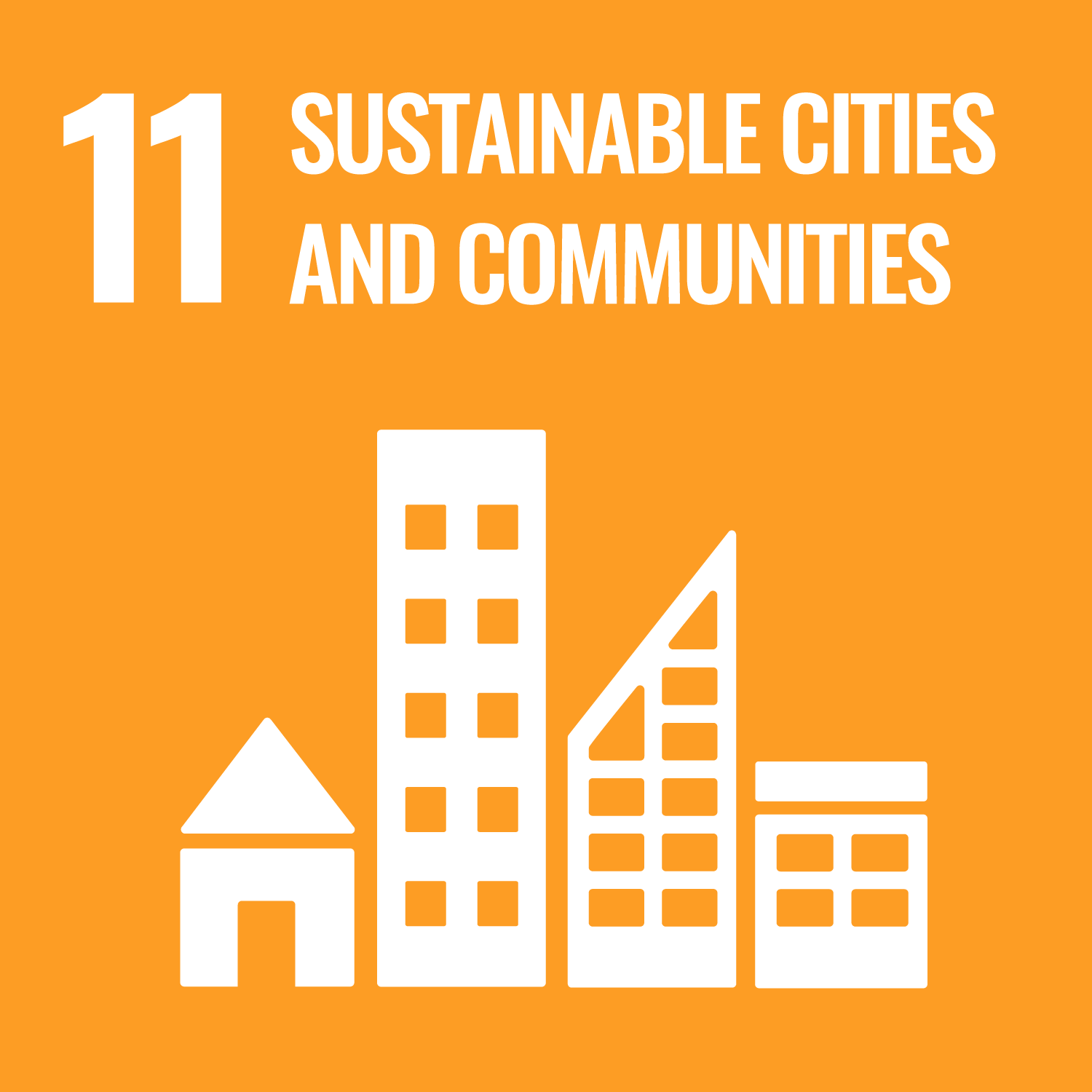
2024.01.15
In January 2022, a large-scale eruption of an underwater volcano occurred near Tonga. Not only did 80 percent of the population suffer damage from the resultant tsunami and ash-fall, but COVID-19, which had previously been contained, spread throughout the country, causing even more suffering. Today, two years after the double disaster, Tonga is progressing along a path of recovery and reconstruction with aid from various countries, including Japan. JICA is continuing to collaborate in strengthening Tonga’s capabilities for disaster risk reduction, something that the agency was engaged in even before the disaster. Meanwhile, three Tongan JICA training participants, who continued their studies of disaster risk reduction online despite the adversities of the volcanic eruption and COVID-19, managed to visit Japan in August 2023. They spoke of the suffering they endured, how they were able to continue their training, and their thoughts on the recovery and reconstruction back home.
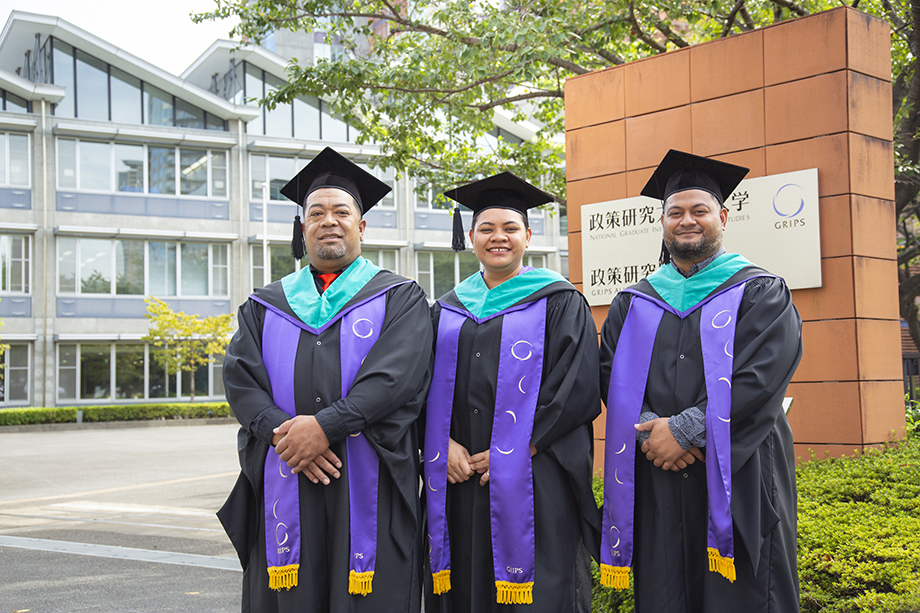
Three Tongan JICA training participants during their visit to Japan. Their itinerary included the National Graduate Institute for Policy Studies (GRIPS), where they obtained master’s degrees through online courses.
On January 15, 2022, the “Hunga Tonga–Hunga Haʻapai Volcano” erupted underwater in the seas off Tonga, sending a cloud of toxic fumes that reached as far afield as 250 kilometers, and creating a tsunami that reached Japan, some 8,000 kilometers away. The event, said to be the worst disaster in decades, became a global news story.
Tonga is composed of more than 170 islands, 45 of which are inhabited. The tsunami and volcanic ash caused great suffering throughout the islands. On Tongatapu, the island of the capital city, as well as ʻEua and Ha’apai islands, buildings flooded and some collapsed. There was extensive damage to transportation and telecommunication infrastructure, as well as crops. Homes were overwhelmed by the tsunami, causing four deaths, and there were many distant islands where the people had to evacuate. It is thought that 80 percent of the population suffered damage.
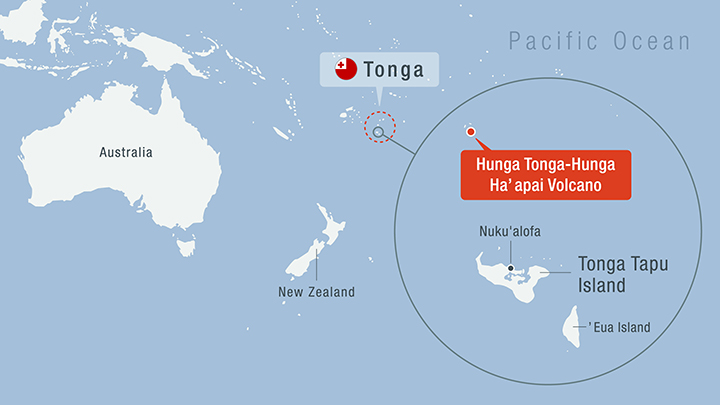
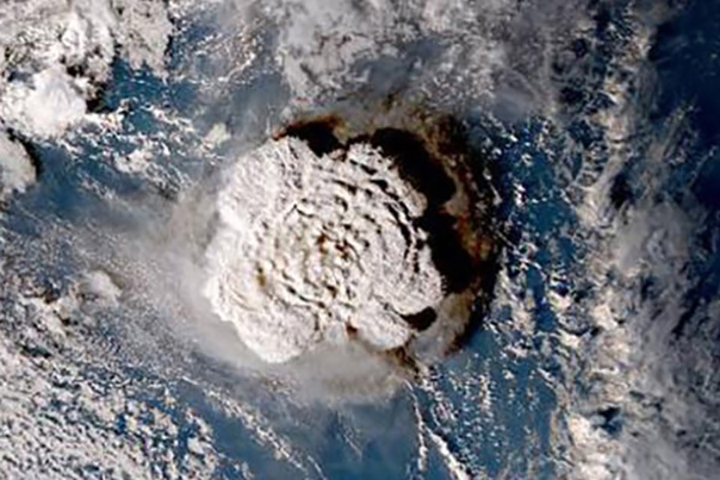
A satellite captured a photo of the Hunga Tonga–Hunga Haʻapai Volcano eruption of January 15, 2022.
Photo from CIA World Factbook
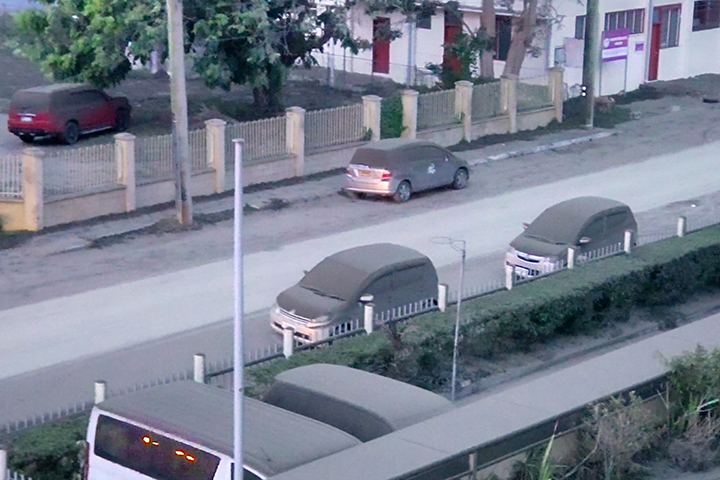
In the days following the volcanic eruption, volcanic ash spread all over Tongatapu Island.
Just after the disaster, the first outbreak of the new coronavirus occurred in Tonga’s communities. Until then, Tonga’s response to COVID-19 had been successful. When the pandemic spread worldwide in 2020, Tonga—along with other Pacific nations—stopped all commercial flights, and put strict travel restrictions in place, effectively preventing travelers from entering the country. It also implemented thorough quarantine measures to prevent infection. Although the pandemic response was a great shock to domestic industries, largely tourism, and the economy, it was able to suppress infections within the country to zero. But the outbreak following the volcanic eruption was difficult to control and infections spread rapidly over a short time. The Tongan government faced a great dilemma in how to respond to both the volcano/tsunami damage and the COVID-19 pandemic. International organizations of many countries reached out with aid toward Tonga.
Japan immediately implemented emergency aid measures. It provided emergency relief supplies such as water and food, pressure washers, bicycle trailers, and shovels using Japan Air Self-Defense Force cargo planes and a Japan Maritime Self-Defense Force cargo ship. It collaborated with the United Nations Children's Fund (UNICEF) and the United Nations' World Food Programme (WFP), and implemented aid programs for the provision of food and drink, as well as in the fields of hygiene and healthcare. It supplied COVID-19 vaccines and medical equipment, cooling facilities for vaccine storage, and transportation vehicles. Private fundraising also led to large sums of monetary donations being given to the Tongan government.
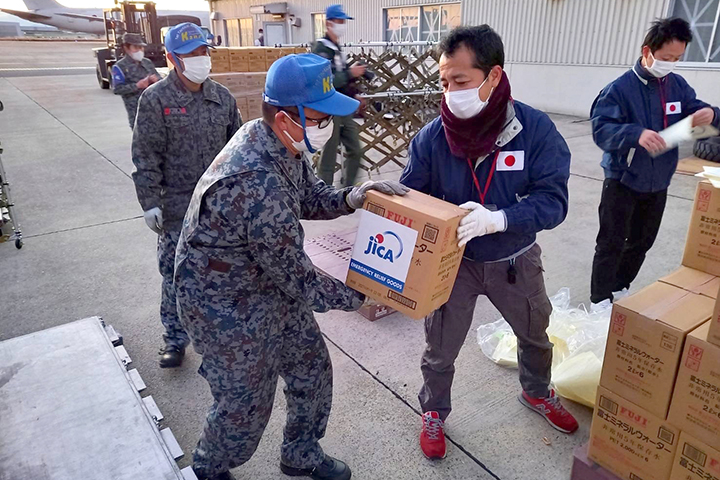
The Japan Disaster Relief Team entrusting emergency relief supplies provided by JICA to the Japan Self Defense Forces for delivery to Tonga.
JICA took on the responsibility for a part of the Japanese government’s aid, providing disaster and emergency relief supplies. It also implemented various projects to improve Tonga’s capabilities in disaster risk reduction. Tonga is at a high risk from disasters, often suffering damage from earthquakes, cyclones, high waves and droughts. Even before this tragic event, JICA had been collaborating with Tonga, using the knowledge and wisdom gained from Japan’s experience with frequent disasters. For example, it has been involved since 2018 in the “Project for the Introduction of the Nationwide Early Warning System (NEWS) and Strengthening Disaster Communication.” Tonga’s many islands are spread over a large area, and the country often had to deal with insufficient communications during the disaster due to the lack of equipment, antiquated broadcasting facilities, etc., causing delays to the evacuation of residents. The Emergency Radio Communication System and Warning Sound Alert System and other features were installed, and in September 2022, an early warning mechanism covering all of Tonga was completed.
For many years, JICA has held the “Knowledge Co-Creation Program for Group and Region Focus,” aimed at teaching administrators and engineers of developing countries using the advanced specialist knowledge, experience and technology of Japan. It has offered various training programs, including in the field of disaster risk reduction. From 2020 through 2022, however, when preventing COVID-19 was paramount, much of the training was moved online. McGoey Sachie has been involved in arranging the program at JICA Tsukuba Center, the organization responsible for training in the field of disaster risk reduction. “It was a first-time trial even for JICA,” she says. “It is a difficult course that requires participants to complete a master’s degree in one year, so we were groping our way along, wondering if we could pull it off successfully.”
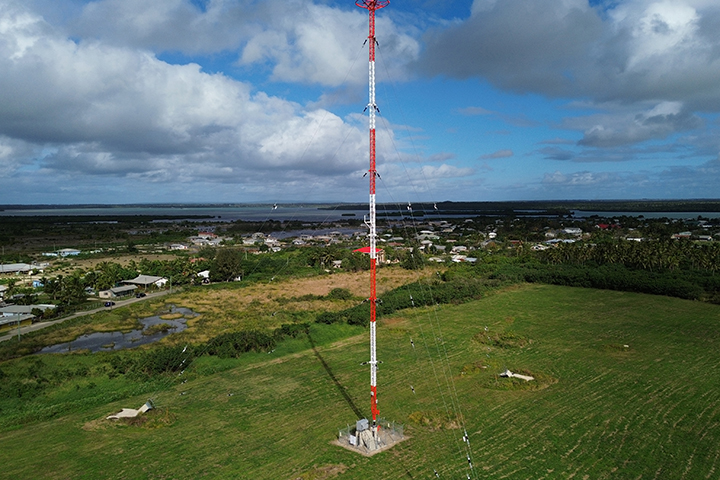
As part of an early warning system for warning distant islands, a transmission antenna for medium wave radio broadcasting was installed in Nuku'alofa.
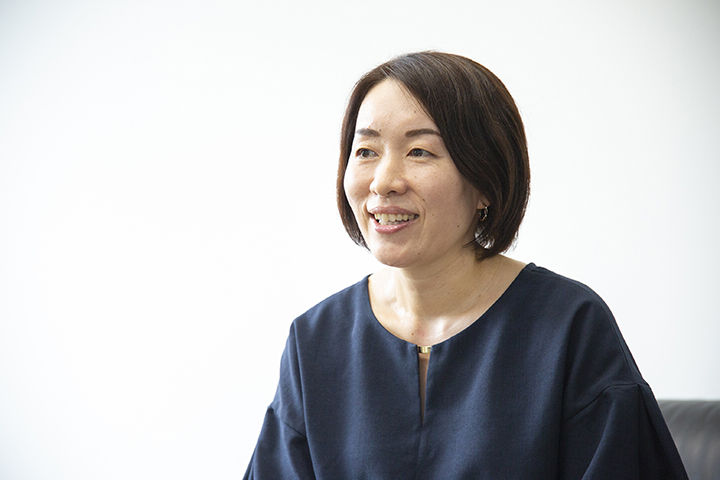
McGoey Sachie of JICA Tsukuba Center.
Four participants took part in the online training from Tonga. Three were enrolled in the “Seismology, Earthquake Engineering, and Tsunami Disaster Mitigation” course, with one enrolled in the “Flood Disaster Risk Reduction” course. Internet speeds in Tonga are slow, and there are often connection breakdowns during rainy weather. At times, the trainees were unable to attend lectures. At other times, due to different time zones, they had to attend classes during breaks from work, or at night. Over and over, the participants had to gain the understanding of their workplaces and families in order to attend lectures. “We were grateful that everyone at the Building Research Institute (that executed the training program) gave their assistance, too,” says McGoey. “They not only supported the streaming of lectures, but also streamed scenes from onsite observations in Fukushima, where recovery and reconstruction from the Great East Japan Earthquake is progressing.” Originally, the participants were meant to come to Japan for training and would have visited these locations in person.
Leger Victorina Stephanie Nodis, a participant involved in housing recovery and reconstruction at the Tongan Ministry of Infrastructure, even had a baby during the training program. “This is an intense program made even more difficult by being online,” says McGoey. “I worried whether she would be alright, having to attend lectures while holding a baby.” Then the volcano erupted, interrupting connections. It took days before the safety of the participants could be confirmed. “I was relieved when I found out they were safe,” she says. “It took two months after that to reconnect the Internet, yet all the participants somehow overcame the difficulties and completed their master’s degrees magnificently. I am so proud of them.”
The COVID-19 situation in Tonga has gradually settled, thanks to overseas support, and recovery and reconstruction from the volcanic eruption and tsunami damage are progressing, though slowly. Commercial flights recommenced, and at the end of August, 2023, three of the four participants who finished the online training program fulfilled their dream of coming to Japan. “At the time of the eruption there was no early warning system, and people panicked when they heard the tsunami warning, and crowded on the higher land,” says Victorina. “I was carrying a baby not yet one month old, but fortunately I was able to get to safety at a relative’s house, along with my mother. My father, who was working on a different island, had his house washed away, but he was able to make a narrow escape. That was the greatest news.”
Victorina said that precisely because they had experienced this disaster, there was great significance in accomplishing the training. “Particularly for Earthquake Engineering, there is almost nowhere to study in neighboring countries,” she says. “There was a great significance in being able to properly study the earthquake resistance standards of Japan—which has been an eye-opening experience for me—and identify the potential gaps in Tonga’s own standards as a result, like the need to update building codes and policies with huge considerations made regarding the inclusion of seismic codes specific to the country. Gaining knowledge on seismology and earthquake engineering reconfirmed the importance of being prepared for disasters like tsunami when earthquakes occur in Tonga, because the islands are very flat and their vulnerability is high.”
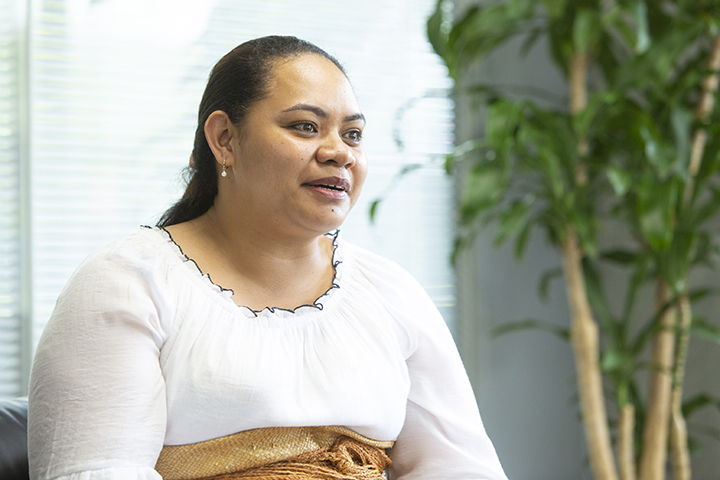
Victorina at the National Graduate Institute of Policy Studies (GRIPS), during her visit to Japan.
During this visit to Japan, Victorina was able to visit the Building Research Institute, see the technology and equipment in person, and meet with her academic advisor, whom she had previously only talked with online. They were able to reaffirm the results of the training and come up with suggestions for the future development of Victorina’s home country. “Since the eruption in Tonga, earthquakes have been occurring more frequently than before,” she says. “I discussed this with my supervisor, who told me he would stay in touch, and look into my research on the seismic evaluation of buildings and design guidelines for tsunami.” The realization of face-to-face communication, which has led to improved communication and stronger work relations, was another major accomplishment of her visit to Japan.
Victorina says that she has been recently transferred to the Ministry of Meteorology, Energy, Information, Disaster Management, Environment, Climate Change and Communications and is working on the Pacific Resilience Program (PRP), a World Bank project. The scope of the project includes upgrading the seismic network and monitoring equipment all around Tonga and its outer islands. Before she joined the World Bank project, Victorina was leading the Housing Resilience Unit under the Ministry of Infrastructure. “As part of that work, a Housing Vulnerability Assessment was developed and undertaken. This was to evaluate the risk posed to existing buildings by earthquakes, tsunami, and other disasters,” she says. “We want to obtain baseline data so that the government can consider how to cope with future risks.”
She says the project is not just about recovery but about making buildings more resilient to disasters. McGoey is deeply impressed with the results of the program. “I could tell from the participants’ enthusiasm that they have taken to heart the spirit of ‘Build back better,’ which is the trend in disaster risk reduction,” she says. Once back home, there is no doubt the participants in this program will play an active role in the true revival of Tonga, now that tourists have begun to return.
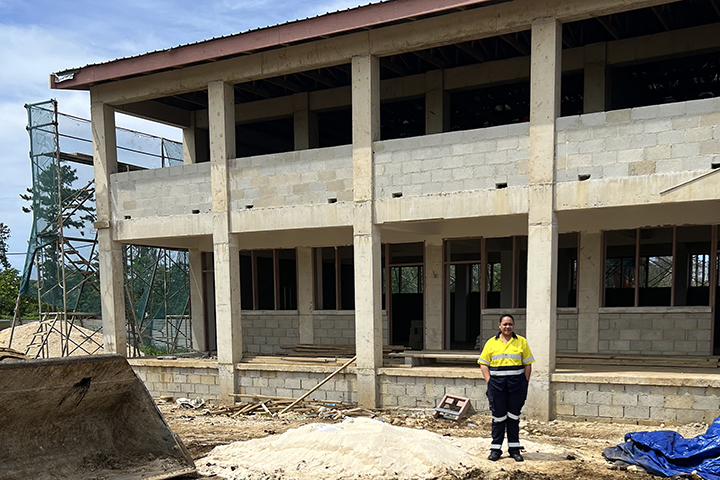
Victorina is currently a project engineer and contract management officer for the new Tonga National Center for early warnings and disaster risk reduction, a two-story reinforced concrete structure now under construction.
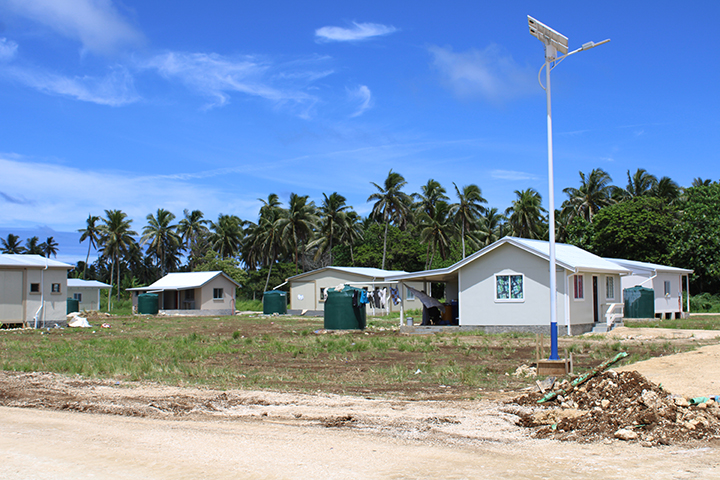
The steps to recovery and reconstruction include building housing for the residents of Atatā Island in the north-west part of Tongatapu, who were all evacuated after the tsunami.
scroll